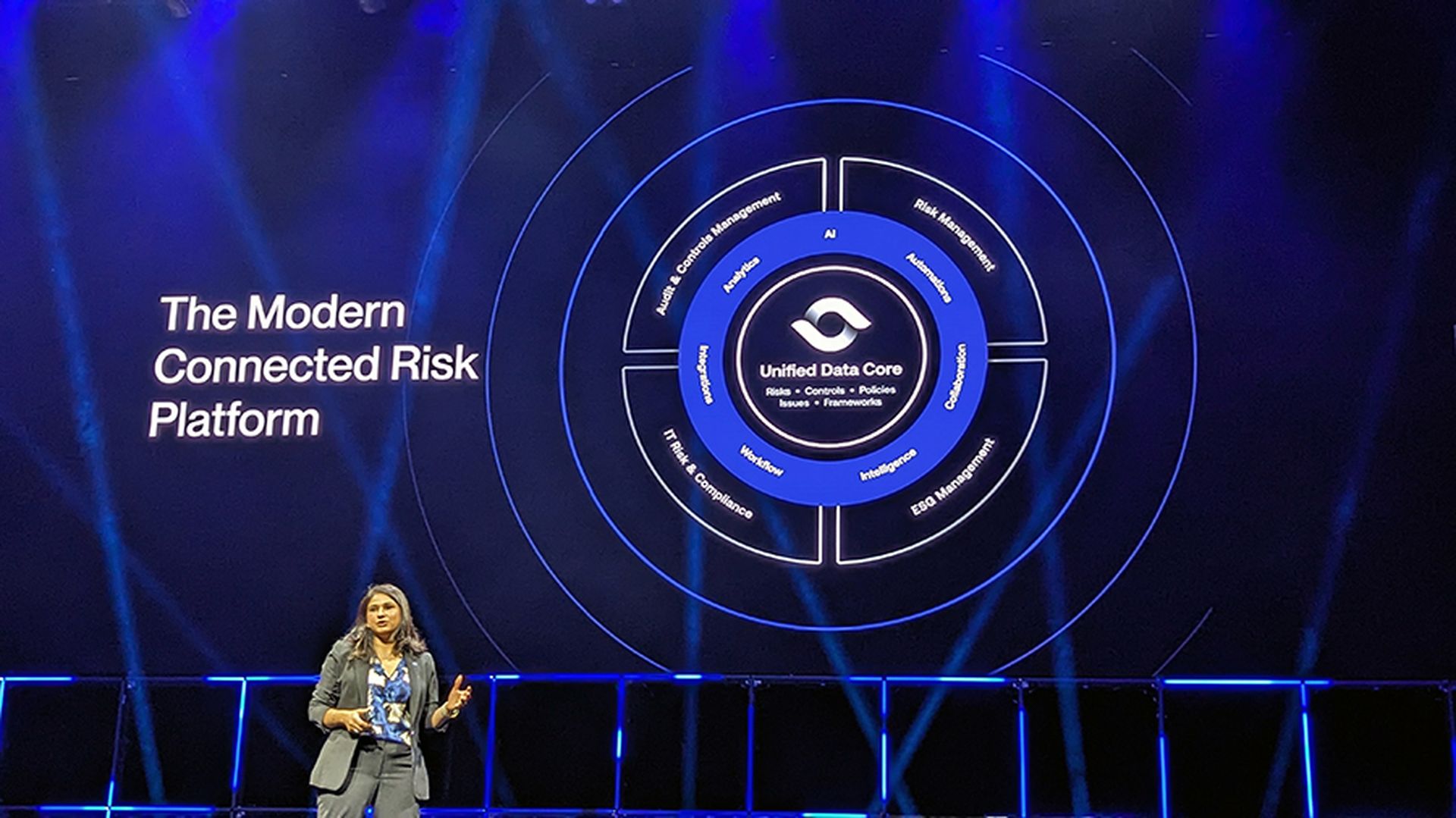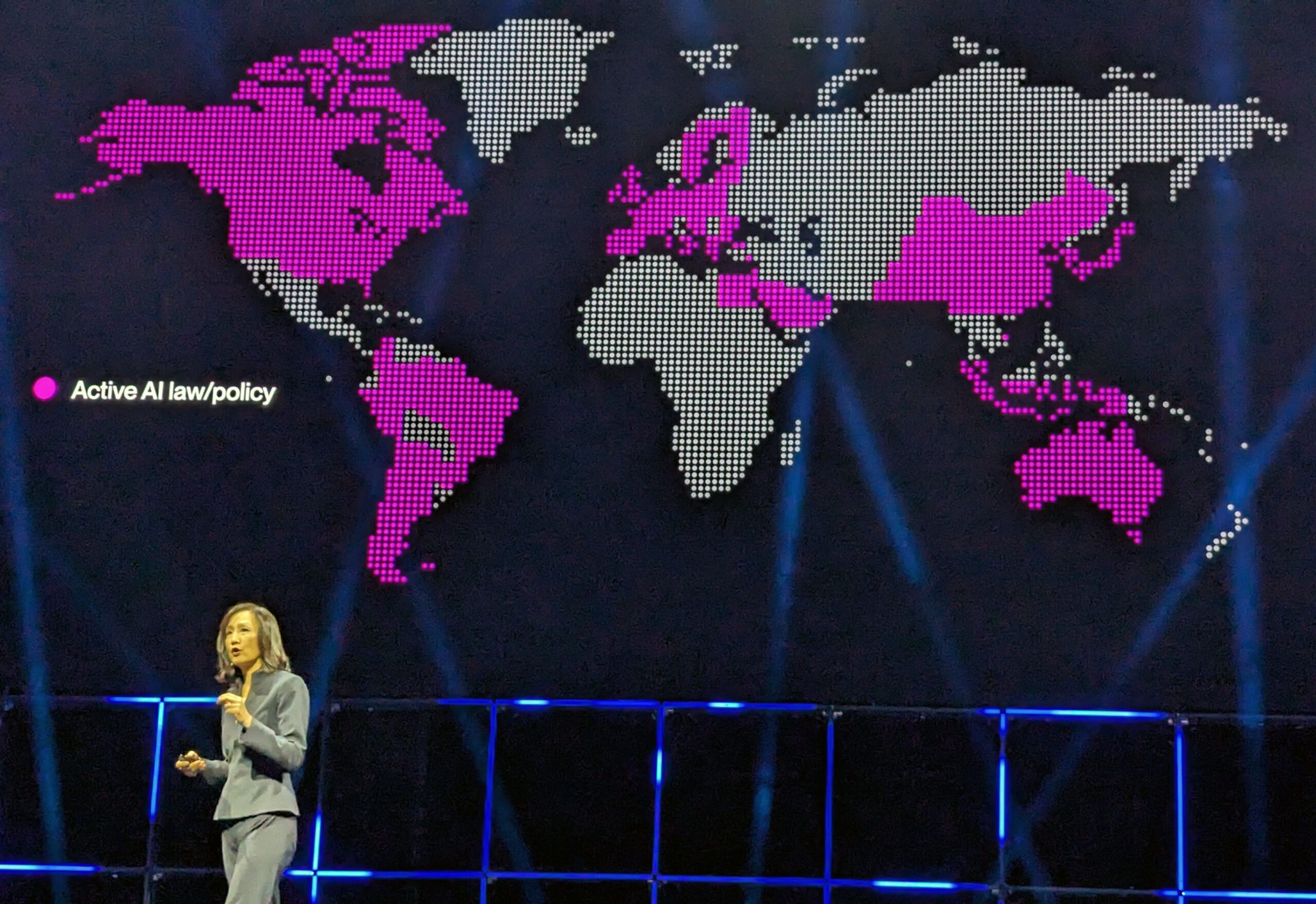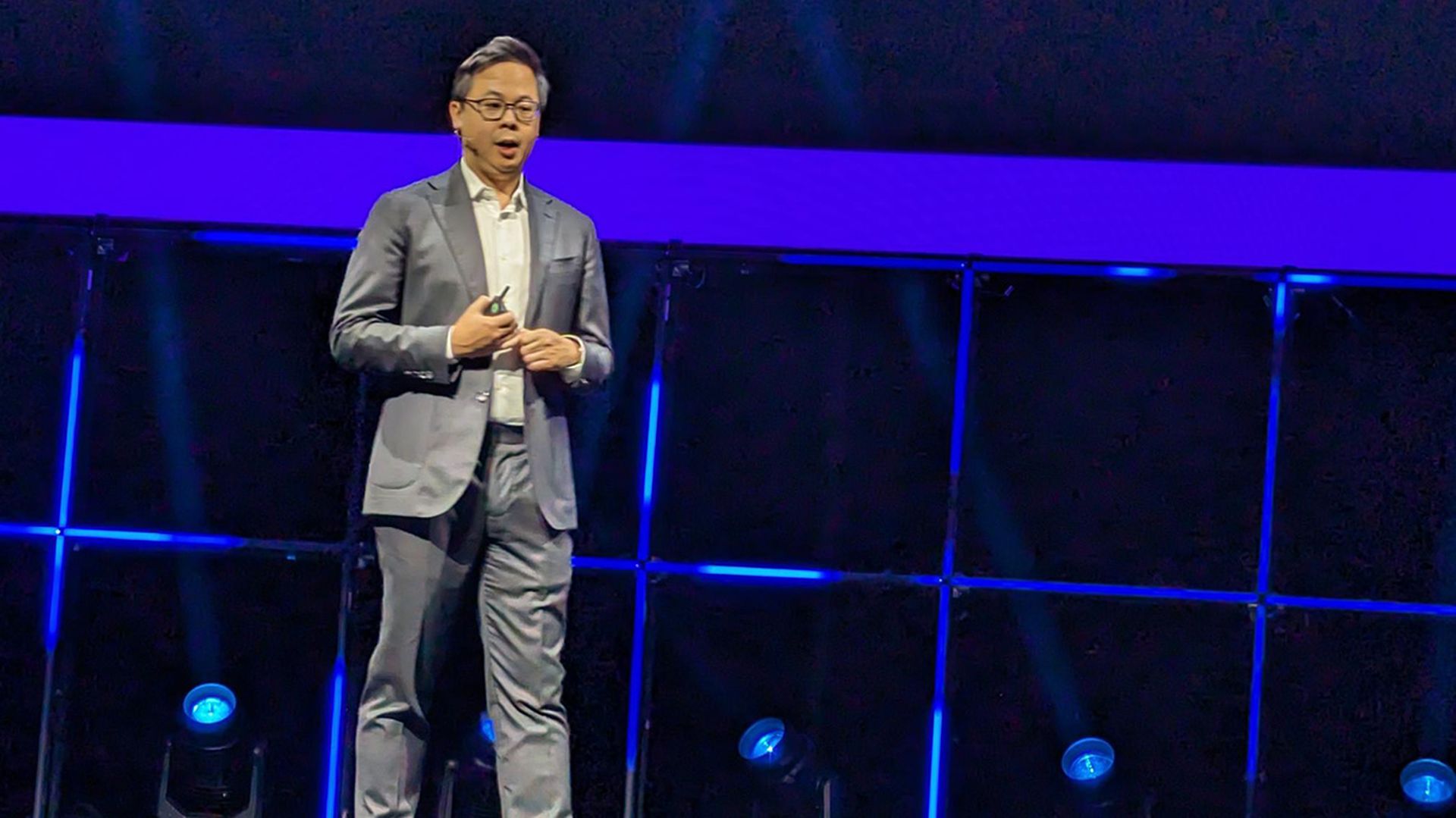LAS VEGAS — For all the talk of the benefits of Big Data, many companies struggle to see the full picture— thanks to data silos that keep risk landmines hidden and cyber threats undetected.
Happy Wang, CTO of AuditBoard, believes the solution lies in breaking down barriers and unifying data, turning fragmented risk management into a streamlined, strategic defense. Wang sat down with SC Media at this week’s Audit & Beyond conference where the company debuted new product offerings and amped up its AI playbook.
Find all of SC Media's coverage from Audit & Beyond here.
Data silos are a critical challenge for companies aiming to strengthen their cybersecurity defenses. Fragmented information across departments limits the effectiveness of attack surface management tools and internal compliance platforms that use AI to gain visibility into each silo, hindering comprehensive analysis and delaying responses to threats.
“Cloud data repositories are overflowing with ever more newly captured data. But when teams, departments, individuals and systems are isolated, you get bottlenecks,” Wang said. “It is critical to break down silos to improve risk visibility across an organization.”
She argued replacing silos with “connected risk” frameworks enhance security and swing open the door to the promise of real-time threat intelligence sharing and allowing for quicker identification and response to risks and threats before they escalate.
That connected risk approach dovetails with AuditBoard’s recent platform update where AI plays a growing role in fueling audit and compliance efficiencies horizontally within the enterprise.
AuditBoard’s approach: A unified data infrastructure for stronger cybersecurity
Wang’s vision and strategy at AuditBoard and the industry revolves around centralized platforms that unify data from various sources, enhancing connected risk management.
“Our goal is to ensure that all relevant data — whether it’s from compliance, audit, IT security, or threat intelligence — is accessible through a single, integrated system,” Wang said. “This eliminates redundancies, ensures consistency, and makes it easier for AI tools to analyze information holistically, leading to faster and more accurate threat detection."
According to AuditBoard’s Connected Risk Report, released Wednesday, 86% of professionals believe data silos negatively impact risk management. In cybersecurity, this issue is particularly dangerous; silos can cause delays in threat identification and hinder coordinated responses, allowing threats to escalate. The report emphasizes that a connected risk strategy, which integrates people, data, processes, and technology, is essential for mitigating such vulnerabilities.
Cross-silo agreement: In principle, maybe not practice
Integrated systems not only improve efficiency but also provide real-time data visibility, critical for modern cybersecurity, said Zach Tisher, USIS CISO at Equifax during a panel discussion this week at Audit & Beyond.
“By integrating [Equifax] controls, we’re able to identify vulnerabilities quicker, act faster, and keep our systems more secure.”
“When silos go up, collaboration breaks down," Cherry Hill Advisory CEO Mike Levy emphasized during the same panel.
"Without real-time data sharing, risks can remain hidden, and responses are delayed. In cybersecurity, that’s a recipe for disaster.”
The role of cloud technology in cybersecurity integration
Wang emphasized the importance of cloud technology in enabling data integration, especially for cybersecurity. “Cloud platforms have made it much easier to store, manage, and share data across different departments and even with external partners,” she said.
“At AuditBoard, we leveraged cloud solutions to ensure that our clients can access their data in real time, from anywhere, without the usual bottlenecks associated with on-premises systems. This is crucial for cybersecurity, where every second counts in detecting and mitigating threats.”
The Connected Risk Report found that companies with advanced cloud-based data integration are nearly five times more likely to experience strong cross-departmental collaboration, emphasizing how cloud technology can streamline the flow of threat intelligence, enabling teams to act swiftly.
Overcoming challenges: Data security and privacy in cyber contexts
While integrating data is essential, it also raises concerns around data security and privacy — key issues for cybersecurity.
“One of the challenges we face is ensuring that as we centralize data, we’re also safeguarding it,” Wang acknowledged.
“Data privacy laws like GDPR and CCPA mean we have to be vigilant about how data is stored, accessed, and used, especially when AI algorithms are involved. But for cybersecurity, it's also about protecting that data from being exploited by malicious actors.”
She said AuditBoard addresses these concerns by implementing robust encryption, access controls, and regular audits.
“We’ve built security into the core of our platform,” said Wang.
“It’s not just about making data accessible but ensuring that only the right people have access to it, and that data is always handled in a compliant and secure manner. This way, we minimize potential attack vectors, making the overall system more resilient against cyber threats.”
Breaking down barriers to enhance cyber defense collaboration
Beyond technical challenges, breaking down data silos involves overcoming organizational barriers. Departments often have different data standards and priorities, which can hinder collaboration. Wang believes fostering a culture of cooperation is essential.
“Technology can only do so much; there has to be a shift in mindset as well,” she said.
“We work closely with our clients to ensure that everyone — from IT to compliance to audit teams —understands the benefits of integrated data and is on board with the changes. In cybersecurity, that means enabling faster communication and response to threats across all departments.”
The future of AI integration in cybersecurity
Looking ahead, Wang sees even greater opportunities for AI-driven risk management as data integration improves, with significant benefits for cybersecurity.
“As we continue to refine our data integration capabilities, we’ll see AI becoming even more predictive and prescriptive,” he said.
“Instead of just identifying risks, AI can start to suggest specific actions companies can take to mitigate those risks. But that level of insight is only possible when the data feeding those AI models is comprehensive and well-organized.”
Organizations adopting connected risk strategies experience fewer barriers to AI adoption, enabling them to leverage AI tools more effectively, according to the AuditBoard study.
Wang’s vision for connected risk at AuditBoard is one where integrated systems help predict, isolate, and neutralize threats before they cause damage, transforming risk management from a reactive process to a strategic advantage.
The path forward for cybersecurity
As AI continues to play a transformative role in audit and risk management, companies must address the challenge of data silos to unlock its full potential, particularly in cybersecurity.
Wang said AuditBoard’s approach offers a clear roadmap: centralize data, leverage cloud technology, ensure security, and foster collaboration.
By breaking down these barriers, businesses can create a unified, data-driven environment where AI can thrive, leading to more accurate threat assessments, improved efficiency, and a proactive cybersecurity posture.
“AI is not a magic bullet — it’s a tool that needs the right infrastructure to work effectively,” said Wang.
“By addressing the barriers of data silos and focusing on integration, we can help companies unlock the full potential of AI, turning risk management from a reactive process into a strategic advantage. In cybersecurity, this translates to quicker threat detection, more precise responses, and ultimately, stronger defenses against evolving threats.”




